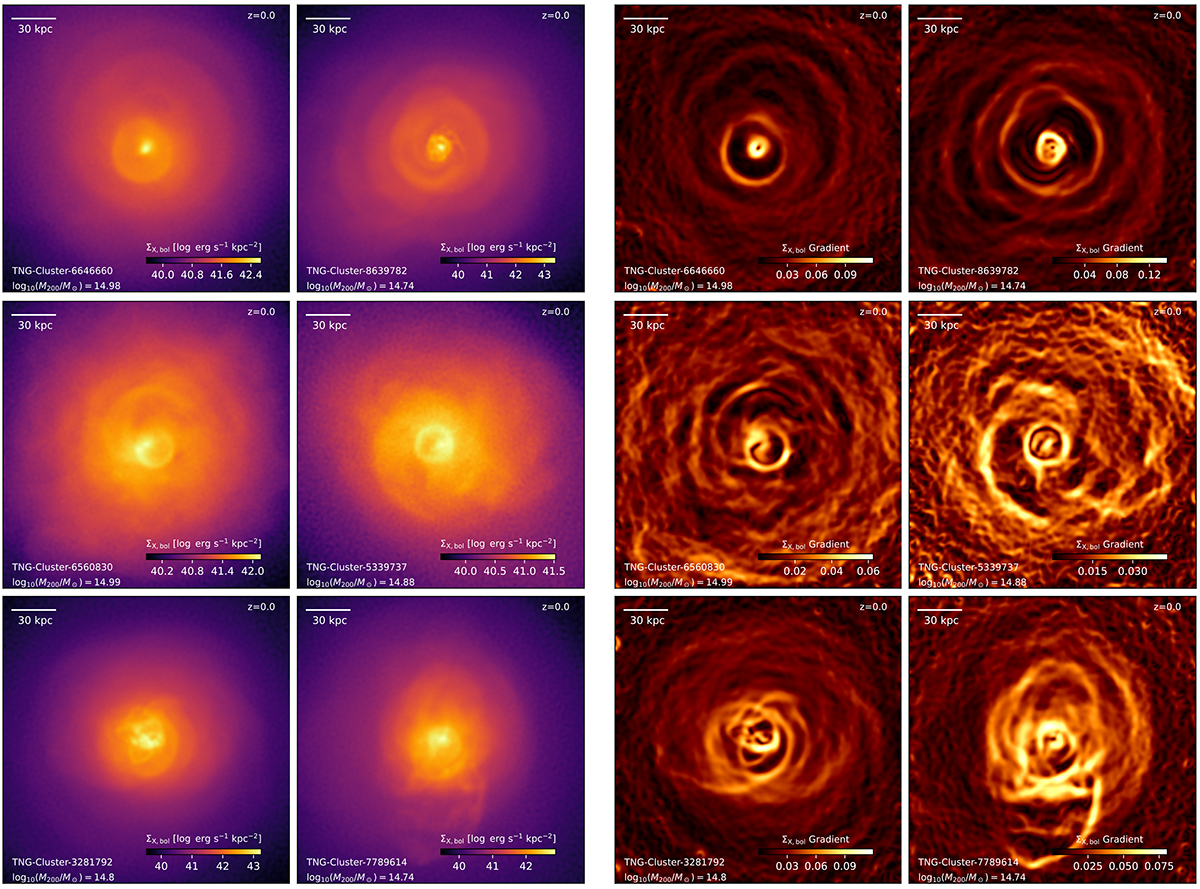Fig. 2.

Download original image
X-ray surface brightness (left column) and spatial gradient (right column) maps of a subset of Perseus-like systems from the TNG-Cluster simulation. The gradient maps are made by applying a Gaussian gradient magnitude filter with a smoothing length σ = 2 pixels (2 kpc) to the surface brightness maps on the left column. The maps encompass a region of 200 kpc per side with a projection depth of 2 R200c. It is noted that the color scale varies across the different clusters. Halos that exhibit closely analogous X-ray morphologies are grouped within the same row. As observed in the real Perseus, ripples, cavities or bubbles, and shock fronts are clearly visible in our simulated Perseus-like clusters at z = 0.
Current usage metrics show cumulative count of Article Views (full-text article views including HTML views, PDF and ePub downloads, according to the available data) and Abstracts Views on Vision4Press platform.
Data correspond to usage on the plateform after 2015. The current usage metrics is available 48-96 hours after online publication and is updated daily on week days.
Initial download of the metrics may take a while.


